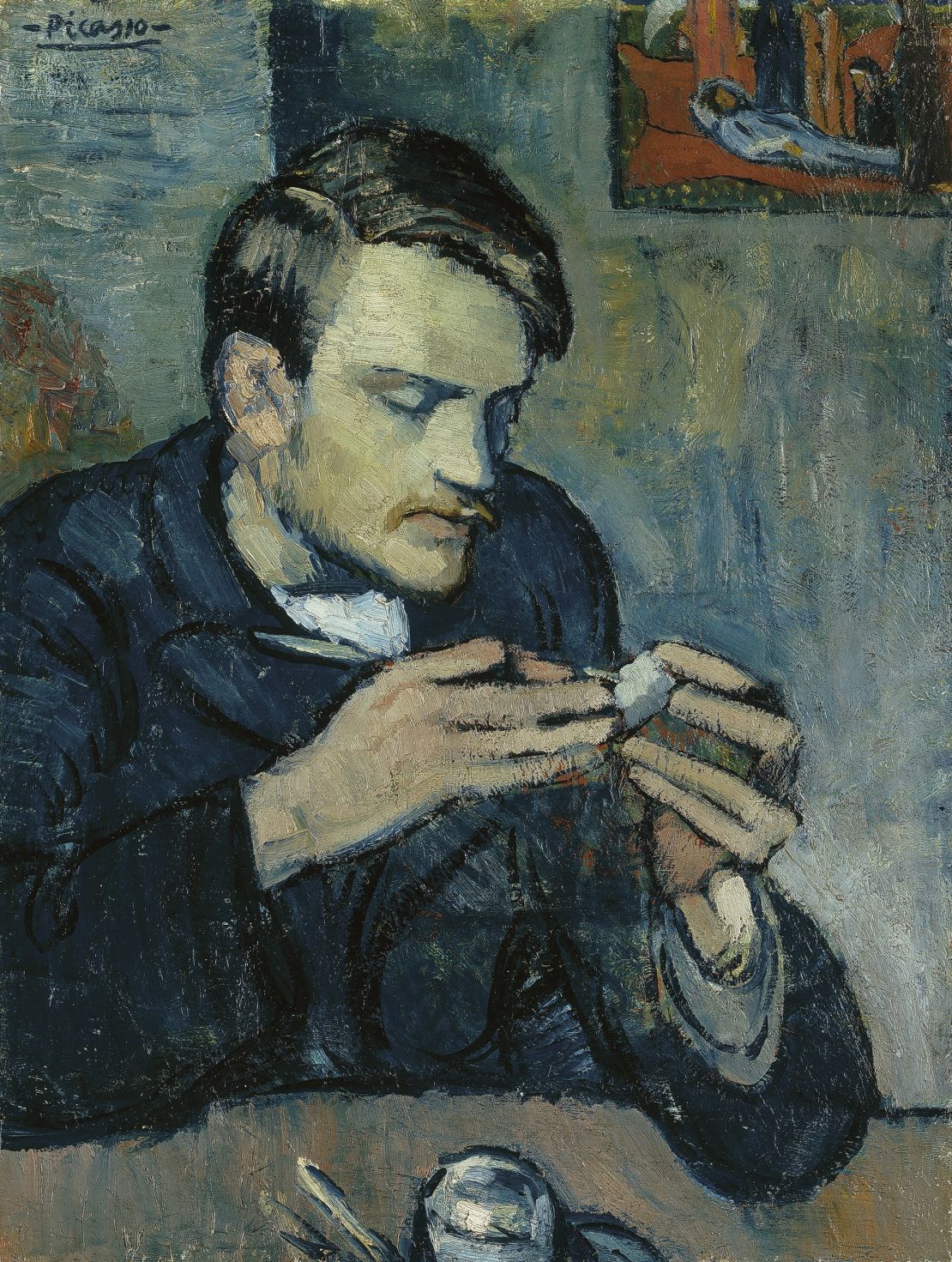London
CNN
—
Art historians studying a painting by Pablo Picasso have uncovered the mysterious portrait of a woman, hidden beneath its surface.
The portrait of the woman was lost when Picasso painted over it, probably a few months afterward, in 1901 to depict his sculptor friend Mateu Fernández de Soto sitting at a table in hues of blues and greens.
But, almost 125 years later, the original portrait’s outlines have been revealed by the Courtauld Institute of Art in London, when they examined the artwork using infrared and X-ray imaging ahead of an exhibition.

The portrait of the woman “literally emerged before our eyes … piece-by-piece,” because of the mosaic-like way an infrared camera scans an image, Barnaby Wright, deputy head of the Courtauld Gallery, explained.
Though experts “were fairly convinced there was something lurking underneath the surface because … you can see brushstrokes … that didn’t really relate to the finished portrait,” they didn’t know what they would find once they began scanning it, Wright told CNN on Monday.
They are still unsure of the woman’s identity, though she resembles several other women Picasso painted in Paris in 1901, as she shares the distinctive chignon hairstyle that was fashionable in the French capital at the time.

“She may forever be a sort of anonymous model,” Wright said, adding that they are working on identifying her. “She might have been just someone who modeled for Picasso … she might have been a lover, she might have been a friend.”
Picasso was just 19 years old when he arrived in Paris in 1901 but he was already finding different ways to paint his subjects.
By abandoning this earlier portrait and painting over it, Picasso was probably “not just changing the subject but also changing his style as he developed his famous Blue Period way of painting,” Wright said.
During his Blue Period, Picasso used more somber colors to depict his subjects as he departed from his earlier Impressionistic style, a change that was in part influenced by the suicide of his good friend Carlos Casagemas.
X-ray imaging suggests Picasso reworked this canvas perhaps as many as three or four times, partly because he couldn’t easily afford to buy new materials but also because “it’s clear he … enjoyed the process of turning one image into another,” Wright said.
“He didn’t whitewash the canvas in between changing its subject to give him a clean slate. He painted the figure of his friend directly on top of the woman … one figure is emerging from the other, transforming one into the other.”
Still, remnants of the woman’s portrait remain visible to the trained eye. “Once you know what’s underneath from this technical image and you take that back to the finished painting, you can see some of those marks very clearly—her eye and her ear and her hair,” Wright said.
“This ghostly presence of the woman, is actually not just below the surface but it’s actually sort of pressing into the surface itself.”
“Portrait of Mateu Fernández de Soto” will be on display at the Courtauld Gallery in London from February 14 to May 26.